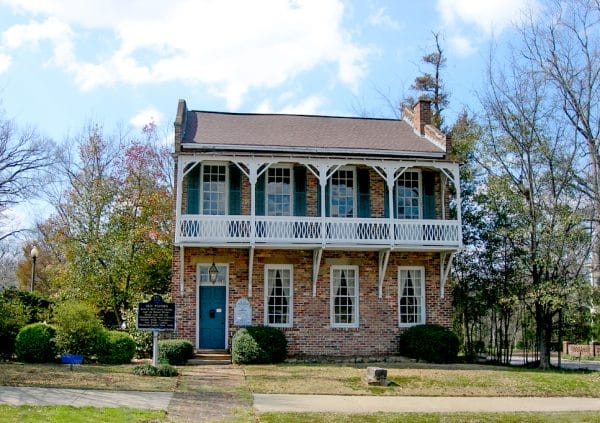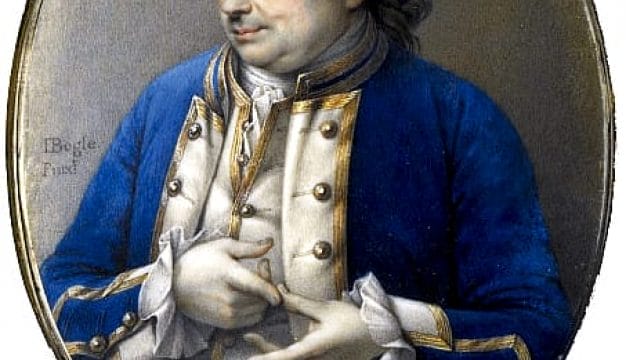Old Tavern Museum
 Old Tavern Museum
The Old Tavern Museum in Tuscaloosa, Tuscaloosa County, is a historic house museum and former inn and tavern that is currently owned and maintained by the Tuscaloosa County Preservation Society (TCPS). Constructed in 1827, the French colonial-inspired building served as an unofficial meeting site for state legislators while the nearby Capitol Building was being constructed and was later used as a private residence. The Old Tavern Museum is one of the few remaining nineteenth-century inns in the state and provides an example of early commercial architecture in Tuscaloosa.
Old Tavern Museum
The Old Tavern Museum in Tuscaloosa, Tuscaloosa County, is a historic house museum and former inn and tavern that is currently owned and maintained by the Tuscaloosa County Preservation Society (TCPS). Constructed in 1827, the French colonial-inspired building served as an unofficial meeting site for state legislators while the nearby Capitol Building was being constructed and was later used as a private residence. The Old Tavern Museum is one of the few remaining nineteenth-century inns in the state and provides an example of early commercial architecture in Tuscaloosa.
In 1827, just a year after the Alabama legislature moved the state capitol from Cahaba, Dallas County, to Tuscaloosa, hotel proprietor William Dunton constructed the inn and tavern along the three main stagecoach lines—the Bear Meat Cabin Road, Cheatham Road, and Byler Road—leading into Tuscaloosa. Dunton, who also was the owner and proprietor of the nearby luxurious Golden Ball Hotel, built his new tavern as a lower-cost option for less affluent travelers. The building’s design is inspired by French colonial architecture commonly seen in New Orleans and Mobile. It is a two-story brick structure with tall windows and a long overhanding porch on the second floor. The top floor contained six rooms for guests and the bottom floor served as a tavern and dining area.
Dunton’s tavern benefitted from its location next to the temporary home of the Alabama state legislature while the nearby Capitol Building was under construction. The tavern housed travelers as well as state legislators, officials, and lobbyists who ate and drank at the establishment. State committee meetings were sometimes held in the main parlor. Gov. John Gayle maintained a temporary room in one of the cabins connected to the tavern during his administration (1831-35) while his wife, Sarah Ann Haynesworth Gayle, and their children remained at their home in Greensboro, Hale County. Towards the end of the American Civil War, Confederate soldiers often lodged at Dunton’s tavern as they retreated from Union attacks in northern and southern Alabama.
 Old Tavern
From 1882 until 1964, the tavern was used as a private residence by several local families before falling into disrepair. It was documented by the Historical American Buildings Survey (1934 and 1936), which shows a one-story attached room with a large chimney in the rear. It was then known as “Duffie’s Tavern” and was located at 2800 Twenty-eighth Avenue. In 1965, the state decided to expand the nearby Hugh Thomas Bridge over the Black Warrior River and the tavern was slated for destruction. Instead, the historic building was deeded to the TCPS under the requirement that it be removed from the property. Over the next two years, local school children helped raise the money to fund the building’s removal and the TCPS relocated it three blocks away to the historic Capitol Park in 1966. The interior of the home was restored and on October 13, 1968, “The Old Tavern” officially opened as a house museum. The bottom floor now resembles an antebellum sitting room and dining room, and the top floor features reconstructed bedrooms with donated nineteenth-century period pieces from the capitol period (1826-1846).
Old Tavern
From 1882 until 1964, the tavern was used as a private residence by several local families before falling into disrepair. It was documented by the Historical American Buildings Survey (1934 and 1936), which shows a one-story attached room with a large chimney in the rear. It was then known as “Duffie’s Tavern” and was located at 2800 Twenty-eighth Avenue. In 1965, the state decided to expand the nearby Hugh Thomas Bridge over the Black Warrior River and the tavern was slated for destruction. Instead, the historic building was deeded to the TCPS under the requirement that it be removed from the property. Over the next two years, local school children helped raise the money to fund the building’s removal and the TCPS relocated it three blocks away to the historic Capitol Park in 1966. The interior of the home was restored and on October 13, 1968, “The Old Tavern” officially opened as a house museum. The bottom floor now resembles an antebellum sitting room and dining room, and the top floor features reconstructed bedrooms with donated nineteenth-century period pieces from the capitol period (1826-1846).
The construction of the Hugh Thomas Bridge yielded numerous artifacts that are preserved and displayed in the Old Tavern, including a collection of whiskey, beer, and medicine bottles. Other exhibits include period furniture, a quilt room, maps of Tuscaloosa, a desk belonging to early settler and Wilcox County senator Walter Raleigh Ross, and various items from nearby Capitol Park. Old Tavern is maintained by the Tuscaloosa County Preservation Society which maintains four historic buildings in the area including the Battle-Friedman House (1835), the McGuire-Strickland House (1820), and the Murphy African-American Museum (1923).
The Old Tavern Museum is located at 500 Twenty-eighth Avenue. Admission is free and tours are given Tuesday through Saturday at 1:30 p.m. Nearby are the Jemison-Van de Graaff Mansion (ca. 1860), the Historic Drish House (ca. 1830), the Alabama Museum of Natural History, the Mildred Westervelt Warner Transportation Museum, and the Paul W. Bryant Museum. South of Tuscaloosa is Moundville Archaeological Park.



